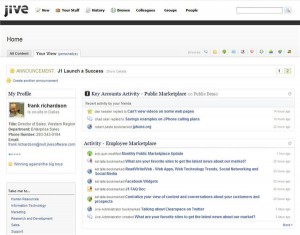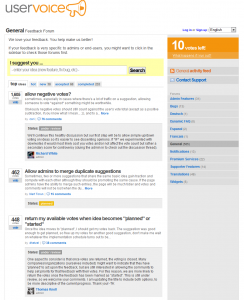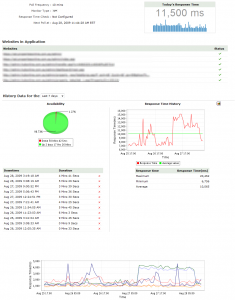 Intranets often receive a lot of criticism, primarily due to a lack of use and therefore an assumption that they are useless. Personally I think this couldn’t be further from the truth, a poorly used intranet is a clear sign that your company culture is not collaborative. Jive seem to have recognised this, and have thrown the overused “social” keyword at the problem. The result, Jive SBS, is actually the most usable intranet product that I have ever seen.
Intranets often receive a lot of criticism, primarily due to a lack of use and therefore an assumption that they are useless. Personally I think this couldn’t be further from the truth, a poorly used intranet is a clear sign that your company culture is not collaborative. Jive seem to have recognised this, and have thrown the overused “social” keyword at the problem. The result, Jive SBS, is actually the most usable intranet product that I have ever seen.
Ignore the marketing jargon laden press release, here is what works about Jive SBS:
- Documents can be grouped, searched and previewed amongst conversations
- Clear staff directory with dynamic org chart
- Comment and voting system lets you gather feedback on content in a dynamic and consistent manner
- Tagging is a good structure for grouping the wide range of content on an Intranet
- Web based documents are a far better way of collaborating on and revising policies etc.
- Modular nature to group/personal dashboard is flexible and really makes customisation easy
- The user interface is clean and user friendly (lots of AJAX, clear/consistent icons and whitespace)
And here is how it doesn’t work:
- “Friends” doesn’t really apply, maybe “team mates” would be more relevant and useful? Even still…
- Status updates are distracting and don’t have any real value
- Activity update lists seem to be inconsistent as far as what is displayed
So basically some elements borrowed from the “social” web do work, but most don’t. In the end the product is just so flexible and easy to use that you can forgive the attempts at creating an internal Facebook.


